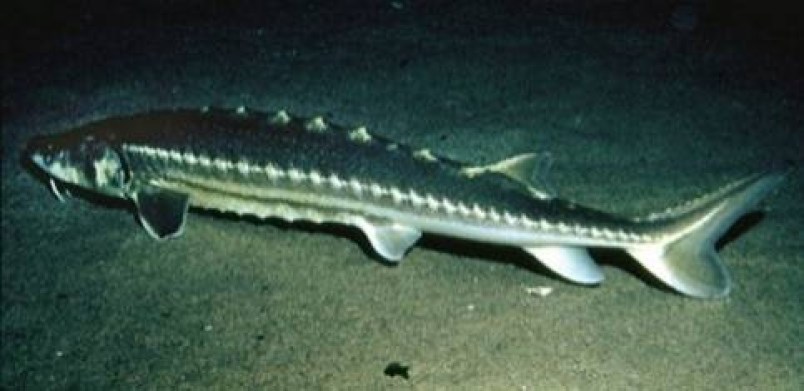Green sturgeon have made a rare appearance in the San Juan River near Port Renfrew.
The large prehistoric fish were filmed swimming in the river estuary last week, probably feeding, says Ron Laidman, a volunteer warden with the ecological reserve and operator of the Remote Renfrew Riverside Retreat.
Green sturgeon are smaller than their larger cousins, the white sturgeon, and are protected under Canada’s Species at Risk Act.
Anglers can fish for greens, but are not allowed to keep them.
And that has Laidman concerned.
“They can be caught and released a few times, but after that they’re usually done,” he said.
He said the fish have not been spotted this week, likely because of higher tides and increasing rains.
Laidman is also worried logging near the Fairy Creek area — a tributary of the San Juan — may also have a longer-term impact on the sturgeon as well as coho salmon, which are now starting to mass for this year’s spawn.
Green sturgeon are found only along the west coast of North America, migrating between Alaska and California, but not a lot is known about the habits of this long-lived and slow-growing fish. The fish are survivors of the dinosaur era more than 200 million years ago, can live up to 100 years and don’t start spawning until they are about 15 years old.
Both species found in British Columbia are experiencing population declines, according to the Department of Fisheries and Oceans. Each are protected and listed as at-risk, but the green sturgeon has the added status of “special concern.”
The population of the green species is not known. Sightings are considered rare.
Green sturgeon spend the majority of their lives in marine waters and spawn in freshwater, according to the DFO.
“Green sturgeon in the San Juan and other systems are possibly seeking out benthic food sources, such as shrimp crab, worms, amphipods and isopods, during their northward oceanic migration, or could be temporarily aggregating in areas with suitable temperatures to meet physiological requirements,” the DFO said in response to emailed questions.
Green sturgeon have been seen in some bigger river systems, including the Fraser, Skeena and Nass.
The DFO said green sturgeons are sighted “every few years,” typically during spring, in the San Juan, Sooke and Gold River areas.
“This observation is consistent with its northward oceanic migration pattern, although little is known of these migrations,” the DFO said.
Although there are uncertainties about their habitat use in Canadian waters, green sturgeon are not thought to spawn in B.C. rivers, said a DFO spokesperson. “They use Canadian marine waters for feeding and migration, and are also known to aggregate in certain marine areas.”
Green sturgeon generally range in colour from olive to dark green, making them easy to differentiate from white sturgeon, which are generally shades of grey. They are also much smaller, growing to about 2.3 metres, compared to the white sturgeon at 6.1 metres longs.
Read more from the Times Colonist



